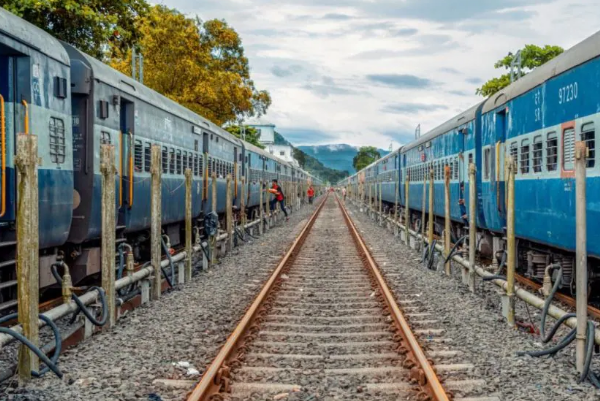Indian Railways’ Kavach: How the indigenous train system aims for Zero Train Accidents
The Kavach system is accredited with the Safety Integrity Level 4, which is basically the highest level of safety & reliability standard, containing the features of existing European systems
Total Views |
- Kinjal Yogesh Dixit
In a huge step towards the development of infrastructure in our country, the Indian Railways has now developed a new system called Kavach, for enhancing safety of running trains. Today, let’s get to know more about this system, and its progress so far. Indian Railways’ Kavach is a made in India Train Collision Avoidance System (TCAS) and Automatic Train Protection (ATP) system. With this system, the Indian Railways aims to achieve the goal of “Zero Accidents”.

This system was developed after Prime Minister Narendra Modi had turned down the plan of Indian Railways to install the European Train Control System Level 2 system across its network. The Prime Minister has then asked of the Indian Railways to develop some indigenous and relatively cheaper solutions of the same.
Made of web | It is a web of electronic devices along with Radio Frequency Identification devices installed in the trains, the signaling system, and in the railway tracks. They communicate using ultra high radio frequencies to control the brakes of the trains and alert the drivers.
What does the system actually do? They Kavach system brings a train to a halt automatically, if – a) it notices another train on the same track within a prescribed distance, and b) if the system finds any other error – like inadvertently jumping the red signal.
The system refreshes the location of the train in a continuous loop, and thereby relays accurate signals to the entire network altogether. Kavach also is able to help the drivers during a situation of relatively low visibility. The Kavach system is accredited with the Safety Integrity Level 4 – which is basically the highest level of safety and reliability standard. It contains the features of existing European systems and more.
Also Read | Kavach to make railway journeys safer! Railway Minister Ashwini Vaishnaw reviews indigenous train protection system
4G Compatible Export: India also plans to export Kavach as a more efficient and economical option to the more expensive European systems. The Research Designs and Standards Organisation (RSDO) is now working on a system which is compatible with the 4G LTE.
When the system will be entirely ready, the Kavach will be the world’s cheapest Automatic Train Protection system. The Kavach system actually costs Rs. 30-50 lakhs per kilometer, which is ¼ the cost of any other train protection systems across the world!
The current coverage in the South Central Railway Zone is – 65 trains have been covered so far, and 1,098 kms have been deployed. The target is 3,000 kms. The Railways Minister, Ashwini Vaishnaw said, “There is the probability of a single error in 10,000 years.”
Earlier this month, to mark the National Safety Day, Railway Minister Ashwini Vaishnaw inspected the working of ‘Kavach’- Indian Railways’ indigenous train protection system between Lingampalli – Vikarabad section of Secunderabad Division of the South Central Railway zone.
The minister also said that Kavach will aid Loco Pilot to avoid Signal Passing at Danger (SPAD) and over speeding. It will also help the trains to run during inclement weather such as dense fog. He also mentioned the salient features of the technology - controls the speed of the train by automatic application of the brakes in case of Loco Pilot failure.
The technology will help repeat line-side signals in cabs which is useful for higher speeds and foggy weather. It works on the principle of continuous update of movement authority, auto whistling at LC gates, helps in avoiding collision by direct loco to loco communication and supports the SOS feature in case of any mishap to control the train in vicinity.
Also Read | 400 energy-efficient Vande Bharat trains to launch in next 3 years
The total expense on development of this technology, till date, is Rs. 16.88 crore. Nearly 1,098 km of network route in South Central Railway is under Kavach.
Indian Railway has conducted trials of Kavach on absolute block section of Lingamapalli – Vikarabad - Wadi, Vikarabad - Bidar (250 KM) section of South-Central Railway. After successful completion of trials, three vendors were approved for developmental orders on Indian Railways.
On Successful trial, a work of Kavach on 1199 Km is in progress in Manmad – Mudkhed – Dhone – Guntakal & Bidar – Parbhani section of South-Central Railway. At present Kavach roll out is planned on New Delhi-Howrah and New Delhi – Mumbai section which is targeted for completion by March 2024. Further roll out will be planned based on experience gained.